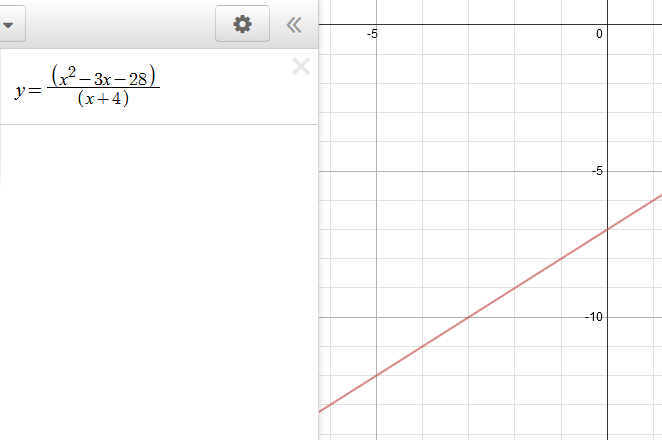What is the discontinuity of the function f(x) = (x^2-3x-28)/(x+4) ?
1 Answer
If a rational expression (basically a fraction with a polynomial in the numerator and another polynomial in the denominator) has a discontinuity, it will be where the denominator equals zero.
So for
or
Now there are two types of discontinuity possible here.
If
If
Let's see:
The discontinuity is removable. The graph would look like the line

Note that most graphers will not properly show a hole (as in this case); this is known as a graphing error.


